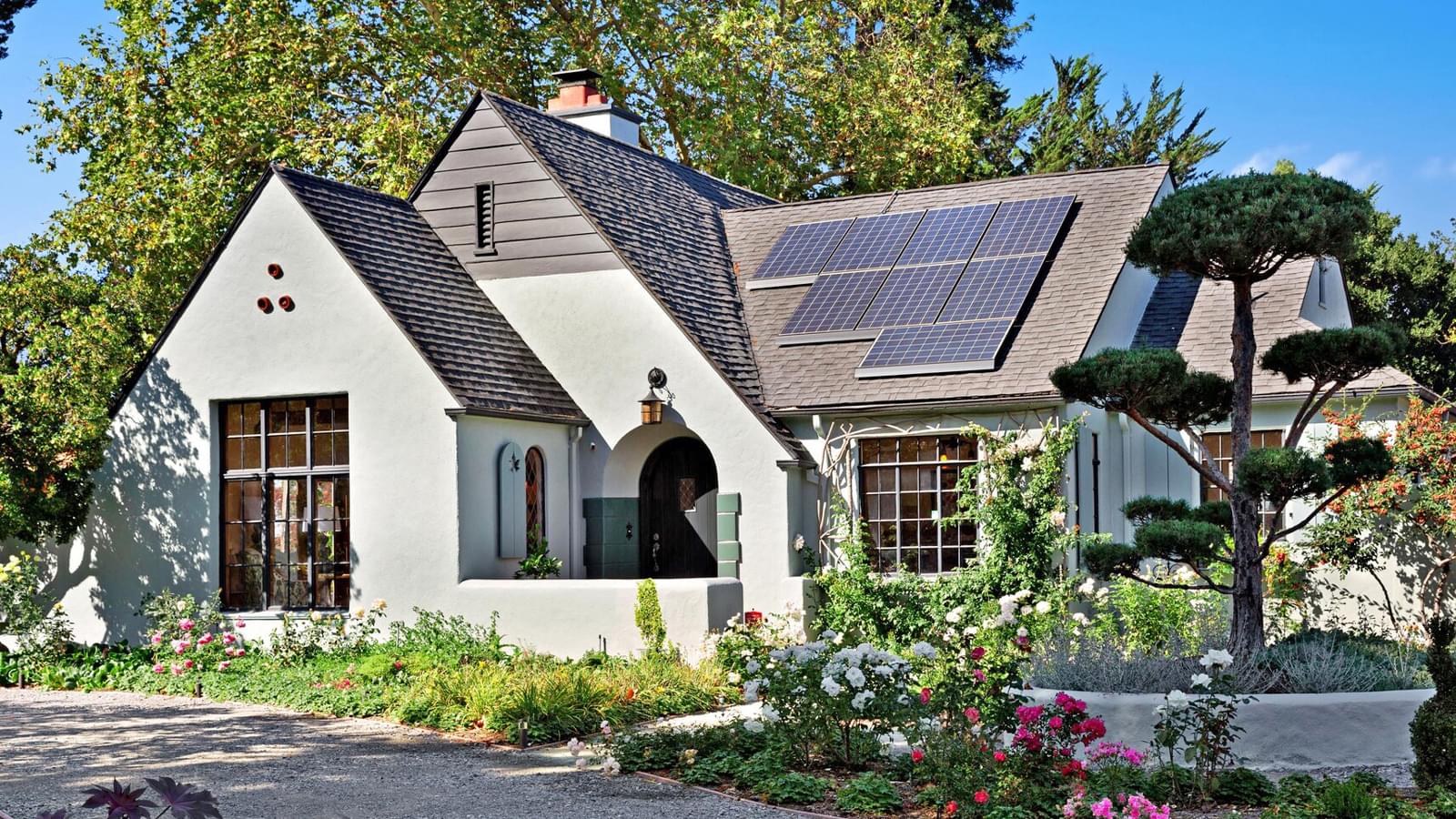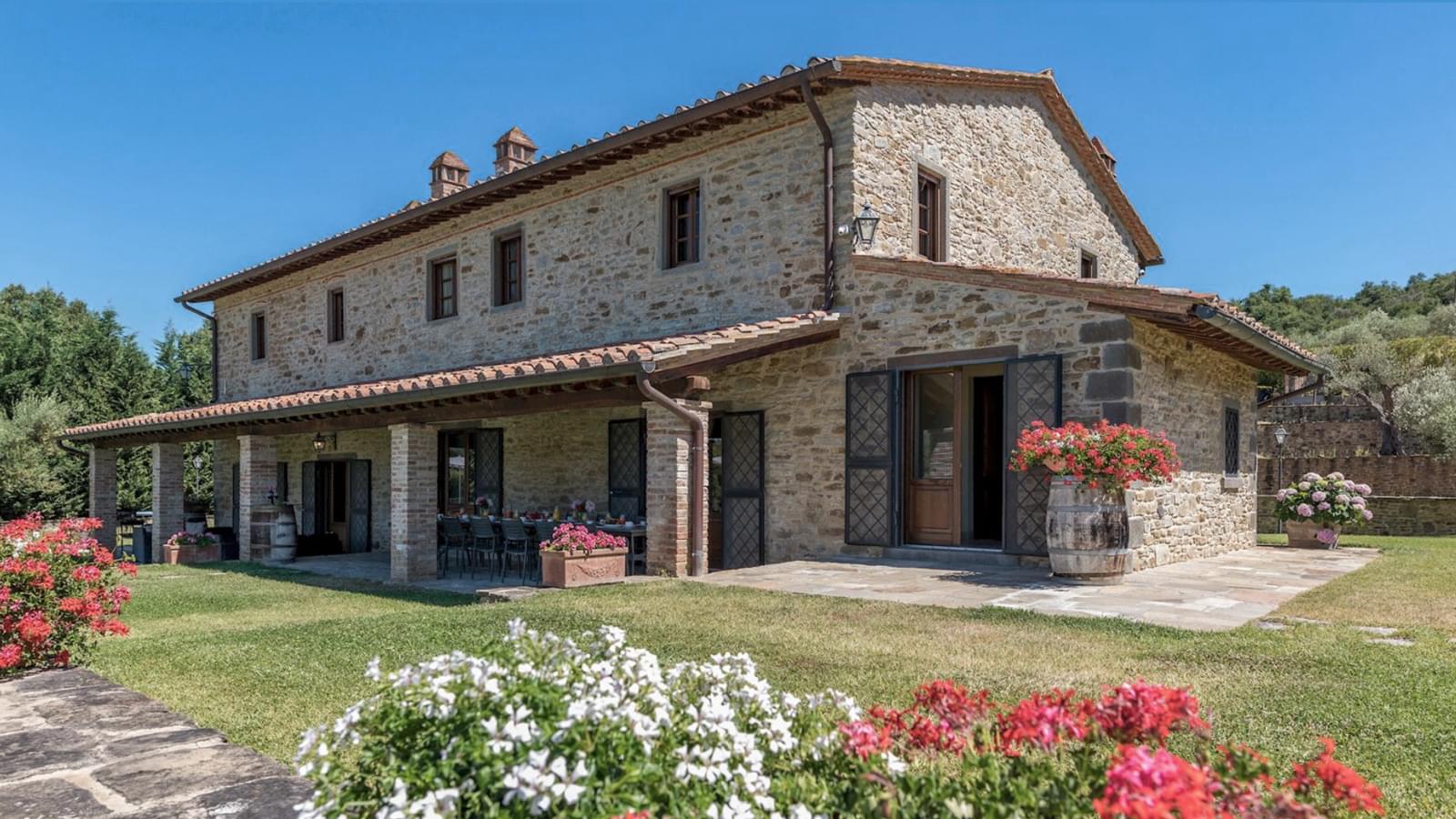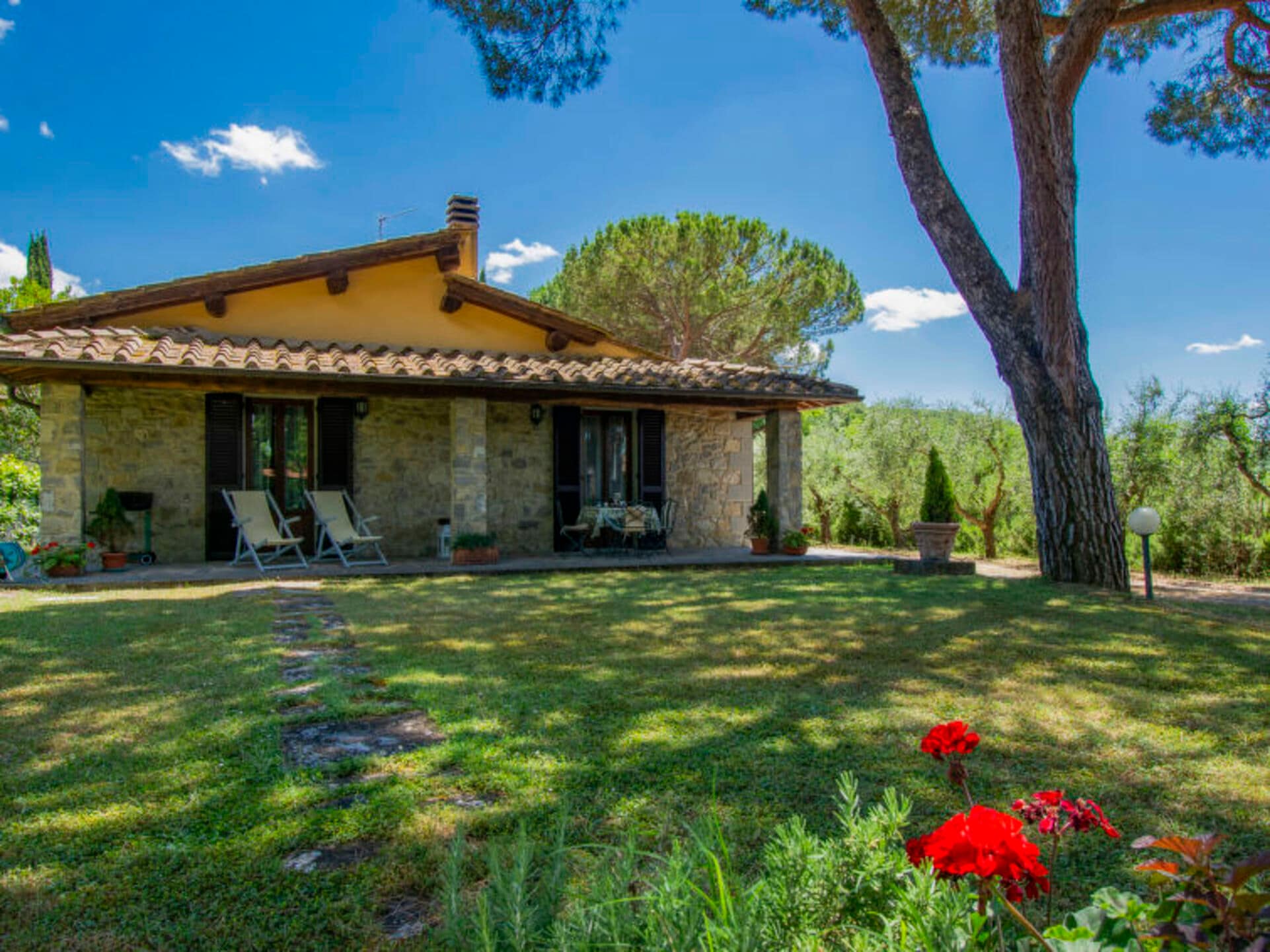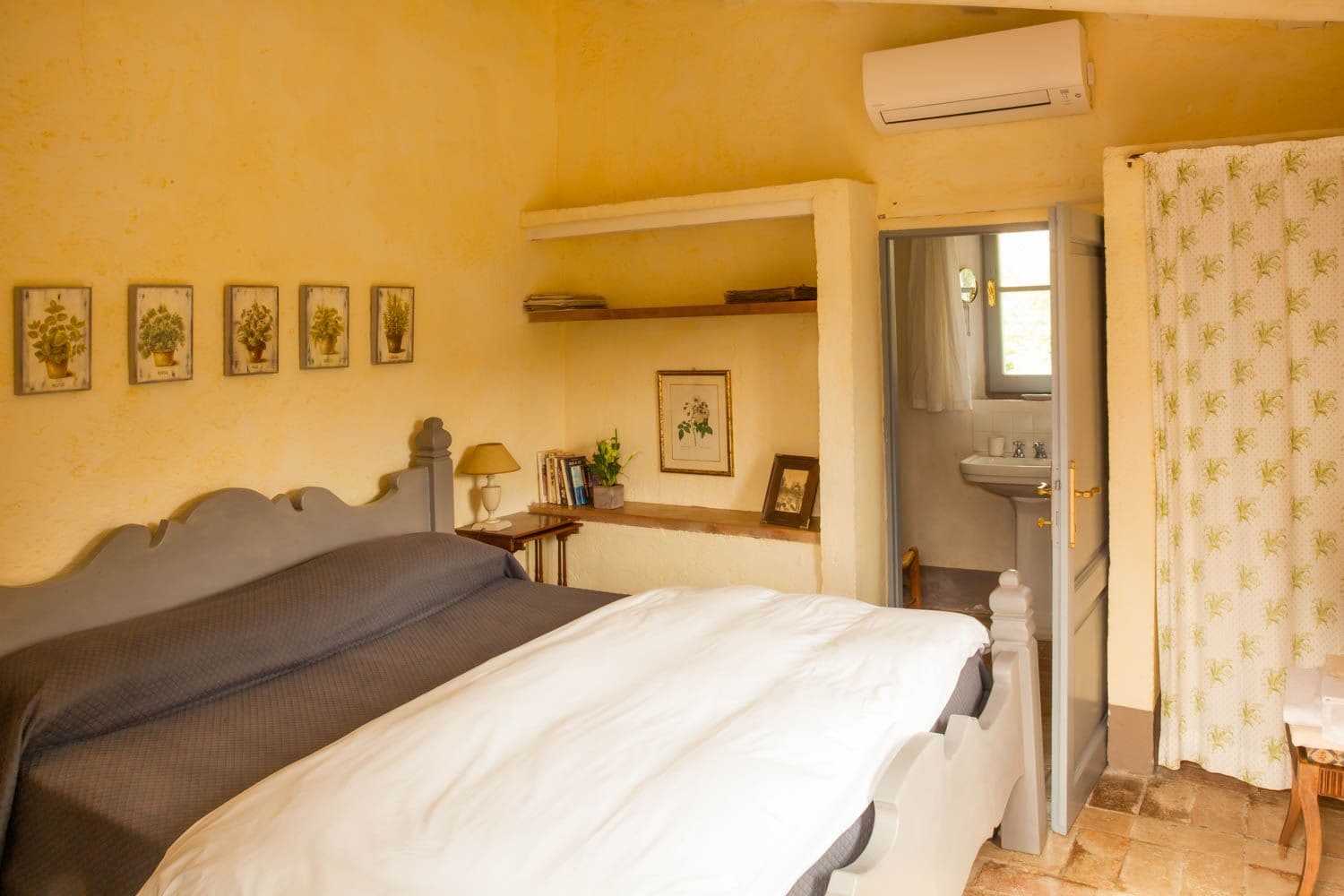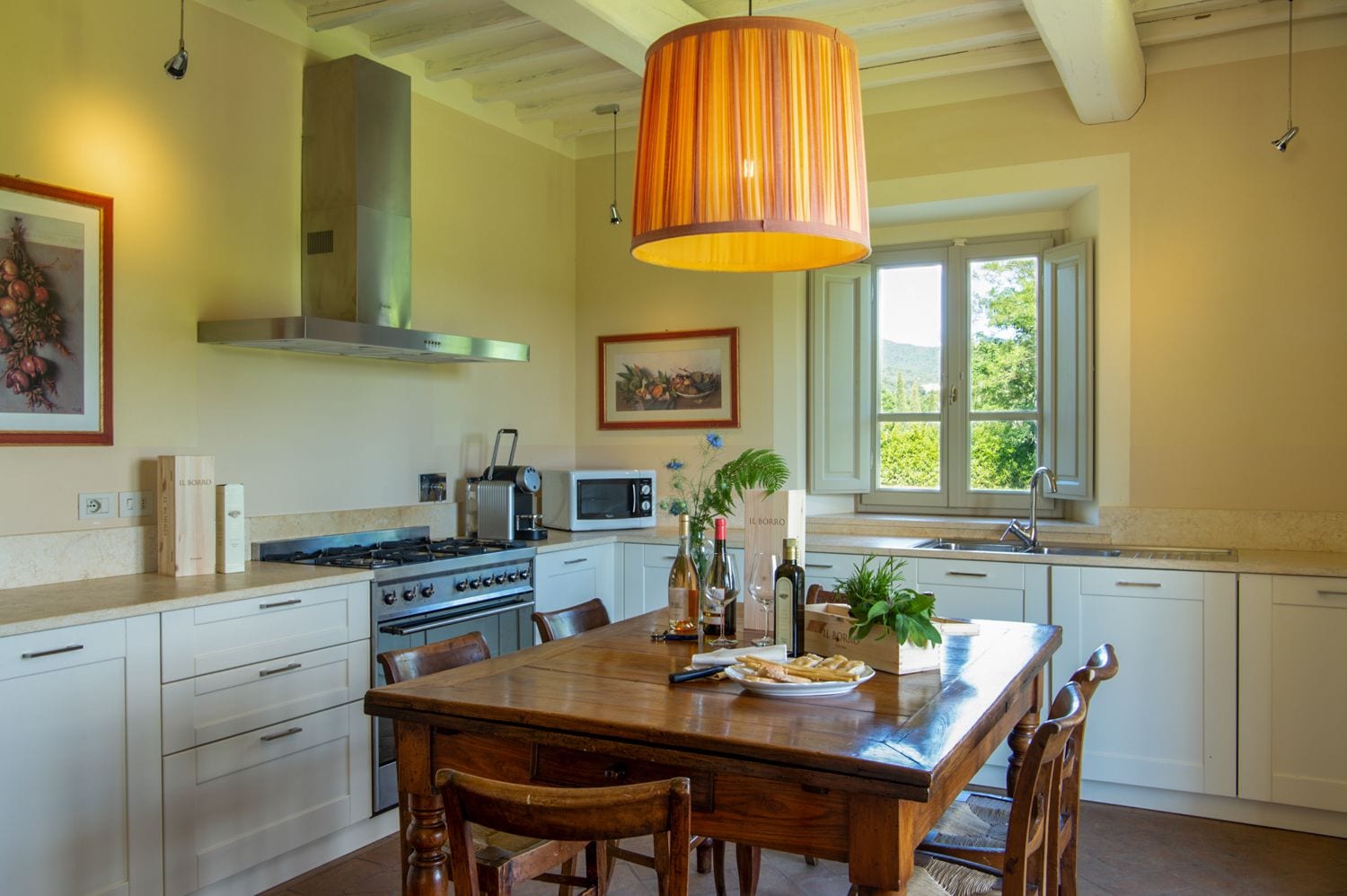Umbria Vacation Rentals
Explore 360 rental homes and villas in Umbria for your next vacation or business travel. With private vacation home rentals, enjoy a more personalized stay and a wide range of amenities such as Homes with Pools, Air Condition Homes and Pet-Friendly Homes. With a wide range of homes to offer, pricing can start as low as $65 per night with homes containing as many as 16 bedrooms and 18 bathrooms. However you're looking to experience your stay, Homes and Villas by Marriott has your next vacation home waiting.
Types of vacation rentals in Umbria
Where to stay in Umbria
Booking a vacation rental in Umbria?
Here are some things to know to support your visit:
Umbria Overview
Nestled in the heart of Italy, Umbria is a treasure trove of cultural richness and natural beauty, often celebrated as the country's verdant soul. This serene region, with its rolling hills adorned with olive groves and vineyards, invites you to indulge in a tranquil retreat, steeped in history and tradition, yet brimming with the comforts of modern luxury.
Imagine waking up in your own private home, nestled among the Umbrian hills, with the freedom to savor your morning espresso by a secluded swimming pool, surrounded by the scent of lavender and rosemary. These private homes, many of which are pet-friendly, offer an intimate experience of the region, allowing you to live like a local in complete privacy. The homes are often restored farmhouses or villas, blending rustic charm with contemporary amenities, ensuring a stay that is both authentic and indulgent.
Umbria's culinary scene is a feast for the senses, where the simplicity of local ingredients is elevated to an art form. The region is a haven for food lovers, with its truffles, legumes, and cured meats laying the foundation for an unforgettable gastronomic journey. Engage in the local tradition of truffle hunting, and later, dine al fresco under the stars, enjoying dishes infused with the day's foraged treasures.
The historical heart of Umbria beats in its medieval towns, each telling a story of the past. Perugia, the vibrant regional capital, is home to architectural marvels like the Palazzo dei Priori and the exquisite Fontana Maggiore. Art aficionados will be drawn to the National Gallery of Umbria, a repository of Renaissance masterpieces. Come summer, the city's streets come alive with the sounds of the Umbria Jazz Festival, a must-attend event for music enthusiasts.
Assisi, a UNESCO World Heritage Site, radiates a spiritual allure that transcends its religious significance. The Basilica of San Francesco d'Assisi, adorned with frescoes by Giotto and Cimabue, is a testament to the town's artistic legacy. The serene ambiance of Assisi's cobblestone streets and the pastoral charm of the surrounding countryside create a setting of unparalleled peace.
For those in search of hidden wonders, Spoleto offers a mosaic of historical treasures, from its ancient Roman theater to the awe-inspiring Ponte delle Torri. The Spoleto Festival infuses this quaint town with a vibrant celebration of the arts each summer.
Umbria's natural splendor is epitomized by Lake Trasimeno, a shimmering expanse of water ideal for sailing or a leisurely picnic on its shores. The Sibillini Mountains National Park beckons adventurers to explore its rugged terrain and discover the region's diverse flora and fauna.
In Umbria, the spiritual and the mystical converge, with sanctuaries like the Eremo delle Carceri and the Temple of Clitumnus offering moments of quiet contemplation.
Umbria is more than a destination; it's an experience that slows down time, inviting you to savor life's simple pleasures amidst a landscape that has inspired poets and painters for centuries. Here, in the privacy of your own Umbrian home, with the luxury of space and the warmth of Italian hospitality, you'll find a retreat that is both a journey back in time and a celebration of the present.
Cultural Attractions in Umbria
Umbria, Italy, often referred to as the country's green heart, is a region that offers a rich tapestry of cultural experiences, making it an enchanting destination for those who revel in the arts, history, and local customs. This landlocked region is dotted with medieval hill towns, dense forests, and rolling vineyards, providing a serene backdrop for a journey through Italy's deep cultural roots.
Begin your exploration in the regional capital of Perugia, a city renowned for its cultural institutions and vibrant arts scene. The Galleria Nazionale dell'Umbria, housed in the Palazzo dei Priori, showcases a stunning collection of Renaissance paintings, including works by Perugino and Pinturicchio. The city's historic center, with its Etruscan walls and cobbled streets, is a living museum that tells the story of Umbria's past.
For a truly unique experience, visit the Umbria Jazz Festival, one of the most important jazz festivals in the world, which transforms Perugia into a lively hub of music each July. Throughout the year, the city's music conservatory and various venues host classical and contemporary concerts, reflecting the region's deep musical heritage.
Assisi, the birthplace of St. Francis, is a spiritual and artistic pilgrimage site. The Basilica of St. Francis, a UNESCO World Heritage site, is adorned with frescoes by Giotto and Cimabue, which narrate the life of the saint and stand as masterpieces of medieval art. The town itself is a maze of quaint streets and sacred spaces that offer a serene retreat from the modern world.
In the charming town of Spoleto, the Festival dei Due Mondi (Festival of the Two Worlds) is an annual celebration of music, art, and culture that draws performers and spectators from across the globe. The town's Roman theatre and the majestic Rocca Albornoziana fortress provide a dramatic setting for a range of performances.
Umbria's local customs are best experienced through its gastronomy. The region is famous for its truffles, wines, and olive oils. Participate in a truffle hunting excursion or visit a local vineyard to taste the renowned Sagrantino di Montefalco wine. The region's cuisine is a reflection of its cultural identity, with traditional dishes that have been passed down through generations.
For those seeking a more intimate connection with Umbrian culture, smaller towns like Gubbio, Todi, and Orvieto offer a glimpse into the region's medieval history, with their well-preserved architecture and local festivals that celebrate ancient traditions.
In Umbria, every experience is steeped in history and artistry, from the frescoed churches and sacred sites to the lively festivals and culinary delights. It's a region that invites you to slow down, savor the moment, and immerse yourself in the authentic cultural richness of Italy.
Family friendly activities in Umbria
Umbria, Italy, is a treasure trove of experiences for families traveling with children, offering a delightful blend of outdoor adventures, educational opportunities, and enchanting historical sites. This verdant region, known as the "Green Heart of Italy," provides a serene backdrop for a family holiday that is both relaxing and stimulating for young minds.
For a start, the region's capital, Perugia, hosts a variety of workshops at the Perugina Chocolate House, where kids can learn about chocolate making and even try their hand at creating their own sweet treats. This is a deliciously interactive experience that combines education with a tasty reward.
Nature-loving families will find plenty to explore in Umbria's great outdoors. Lake Trasimeno, the largest lake in central Italy, offers opportunities for swimming, sailing, and bird watching. The lake's islands can be reached by ferry, making for a fun day trip where children can imagine themselves as adventurers discovering new lands.
For a step back in time, the medieval town of Gubbio presents a fascinating journey through history. Children can marvel at the ancient Roman Theater and take a cable car ride up to the Basilica of Sant'Ubaldo, where they'll be greeted with panoramic views that are sure to captivate the entire family.
The Marmore Falls, near Terni, is another natural wonder that is sure to impress. This man-made waterfall, created by the ancient Romans, is the tallest of its kind in Europe. The park offers guided tours and nature trails suitable for children, allowing them to witness the power of water and learn about local flora and fauna.
For a unique underground adventure, the Frasassi Caves are a must-visit. These remarkable limestone caves are some of the most spectacular in Europe and feature guided tours that reveal stunning stalactite and stalagmite formations. The experience is both educational and awe-inspiring, perfect for curious young explorers.
In the town of Assisi, the birthplace of St. Francis, families can enjoy a peaceful stroll through the Basilica of St. Francis, where children can learn about the saint's life and his love for animals. The town itself is a UNESCO World Heritage site and offers a serene atmosphere for families to soak in the rich history and culture.
Umbria's culinary scene is also very child-friendly, with many restaurants offering simple, delicious dishes made from fresh, local ingredients. Kids can enjoy pasta, pizza, and gelato, all while experiencing the warm hospitality that Italy is known for.
With its combination of natural beauty, historical intrigue, and family-oriented activities, Umbria is an ideal destination for those traveling with children, promising an Italian adventure that will be remembered for years to come.
Outdoor activities in Umbria
Umbria, Italy, often referred to as the country's green heart, is a treasure trove of natural wonders and outdoor activities that will captivate any nature enthusiast. This central region of Italy is characterized by its lush landscapes, rolling hills, and historical hill towns, offering a serene and verdant escape.
The region's most famous natural wonder is undoubtedly the Cascata delle Marmore, a man-made waterfall created by the ancient Romans. Its thunderous waters and misty ambiance create a magical experience for visitors. Hiking trails around the falls allow for exploration and provide various viewpoints to take in the grandeur of this natural spectacle.
Lake Trasimeno, the largest lake in peninsular Italy, is another highlight for outdoor lovers. The lake and its surrounding wetlands are a haven for birdwatching, with several species of waterfowl calling it home. Visitors can enjoy kayaking, sailing, and windsurfing on the lake's tranquil waters, or take a leisurely bike ride around its perimeter to enjoy the scenic views.
For those who enjoy trekking, the Sibillini Mountains National Park offers a range of trails that cater to all levels of hikers. The park is home to the stunning Piano Grande, a vast high-altitude plain that bursts into a riot of colors with wildflowers in spring. The park's diverse landscapes include rugged peaks, deep gorges, and clear mountain streams, making it a perfect spot for nature photography and wildlife spotting.
The Tiber River Park is another natural gem, with paths that follow the river's course through Umbria. It's an ideal location for leisurely walks, cycling, and picnicking, with the lush riverbanks providing a peaceful setting for relaxation.
For a subterranean adventure, the Frasassi Caves are a must-visit. These limestone caves are some of the most spectacular in Europe, with incredible stalactite and stalagmite formations. Guided tours reveal the caves' hidden chambers and the fascinating geological history of the region.
Umbria's natural beauty extends to its numerous vineyards and olive groves, where visitors can enjoy the outdoors while tasting some of the region's finest produce. The region's undulating hills are dotted with medieval towns like Assisi and Orvieto, where one can combine a love for nature with a passion for history and culture.
In Umbria, the connection with nature is intrinsic to the experience. Whether you're seeking adventure, tranquility, or simply the pleasure of being surrounded by natural beauty, this Italian region offers an outdoor experience that is both enriching and unforgettable.
Weather in Umbria
Umbria, Italy, known as the "Green Heart of Italy," offers a climate that is as delightful as its rolling landscapes and medieval towns. The region experiences a temperate climate, with variations due to its topography, which includes valleys and mountainous areas.
Spring in Umbria, from March to May, is a time of renewal and mild weather. Temperatures gradually warm up, ranging from 10°C to 20°C. This season is ideal for those who enjoy the outdoors and wish to see the countryside bloom with wildflowers. Rainfall is moderate, so it's wise to have an umbrella handy.
Summer, from June to August, is the warmest and driest season, with temperatures often climbing to 30°C or higher during the day, especially in the valleys. Evenings are cooler, providing a pleasant respite. The low humidity during this period makes the heat more bearable, and these months are perfect for enjoying Umbria's many festivals and outdoor dining.
Autumn, from September to November, sees a gradual cooling with temperatures ranging from 10°C to 20°C. This season is a favorite for many, as the vineyards and forests turn into a tapestry of reds, oranges, and yellows. Rainfall increases, particularly in November, which is considered the wettest month, so waterproof clothing is recommended.
Winter, from December to February, is the coldest season, with temperatures often between 1°C and 10°C. Snowfall is more common in the mountainous areas, providing picturesque scenes and opportunities for winter sports. In the valleys, snow is less frequent, and the climate remains relatively mild.
The most popular weather conditions are prevalent in late spring to early summer and early autumn, when the temperatures are comfortable, the landscapes are vibrant, and the tourist crowds are smaller. Late May to June and September to October are particularly pleasant times to visit, offering the best balance of good weather and the chance to experience Umbria's rich cultural heritage without the peak season crowds. Whether you're exploring the historic towns, tasting the region's renowned wines and cuisine, or hiking in the countryside, Umbria's climate is as inviting as its scenery.
Transportation in Umbria
Umbria, the green heart of Italy, is a region that captivates with its medieval hill towns, dense forests, and local cuisine. While it may not have the international airports of its neighboring regions, getting to this serene part of Italy is part of its charm.
Travelers typically arrive in Umbria by train or car from nearby cities such as Rome or Florence. The main railway line runs from Rome to Ancona, passing through key Umbrian cities like Spoleto, Foligno, Assisi, and Perugia. The region is also well-served by the Italian motorway system, with the A1 Autostrada connecting Umbria to Rome and Florence.
Once in Umbria, the most convenient way to explore is by car. This allows for the freedom to meander through the rolling countryside, visit remote vineyards, and stop at lesser-known hilltop villages. Car rental services are available in larger towns and cities, and the roads are generally well-maintained, though they can be winding and narrow in places.
For those who prefer not to drive, regional trains and buses connect the main towns and cities. However, public transportation may not always reach the more secluded areas, which are often the most enchanting. Taxis and ride-sharing services can fill in the gaps but may need to be arranged in advance, especially in rural areas.
Umbria's towns themselves are often best explored on foot. Places like Assisi, Orvieto, and Perugia have historic centers that are pedestrian-friendly, with many of the main sights, restaurants, and shops within easy walking distance of each other. Walking through these towns allows visitors to appreciate the medieval architecture, cobblestone streets, and the slow pace of life that is characteristic of the region.
For those looking to venture further afield, cycling is a popular option, with many scenic routes offering a more intimate experience of Umbria's landscapes. Bike rentals are available in larger towns, and there are guided tours for those who want a structured experience.
In summary, while Umbria may not have the transportation conveniences of a major metropolis, its accessibility by train and car, combined with the walkability of its charming towns, make it a delightfully immersive destination for those looking to explore the Italian countryside. Whether you're navigating the winding roads by car, strolling through ancient streets, or cycling past olive groves, Umbria offers a pace and quality of travel that is quintessentially Italian.

